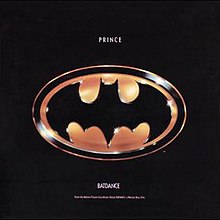
Batman is a 1989 superhero film based on the DC Comics character of the same name, created by Bob Kane and Bill Finger. Directed by Tim Burton, it is the first installment of Warner Bros.' initial Batman film series. The film was produced by Jon Peters and Peter Guber and stars Jack Nicholson, Michael Keaton, Kim Basinger, Robert Wuhl, Pat Hingle, Billy Dee Williams, Michael Gough, and Jack Palance. The film takes place early in the title character's war on crime and depicts his conflict with his archenemy The Joker.

Batman is the eleventh studio album by American recording artist Prince and the soundtrack album to the 1989 film Batman. It was released on June 20, 1989, by Warner Bros. Records. As a Warner Bros. stablemate, Prince's involvement in the soundtrack was designed to leverage the media company's contract-bound talent as well as fulfill the artist's need for a commercial revival. The result was yet another multi-platinum successful cross media enterprise by Warner Bros., in the vein of Purple Rain.

"I Wanna Be Your Lover" is a song by American recording artist Prince. It was released on August 24, 1979, as the lead single from his second album, Prince. The song was Prince's first major hit single in the United States, reaching number 11 on the Billboard Hot 100 on January 26, 1980, holding the number 11 position for two weeks, and peaking at number one on the Billboard Hot Soul Singles chart for two weeks.

"Let's Go Crazy" is a 1984 song by Prince and The Revolution, from the album Purple Rain. It is the opening track on both the album and the film Purple Rain. "Let's Go Crazy" was one of Prince's most popular songs, and was a staple for concert performances, often segueing into other hits. When released as a single, the song became Prince's second number-one hit on the Billboard Hot 100, and also topped the two component charts, the Hot R&B/Hip-Hop Songs and Hot Dance Club Play charts, as well as becoming a UK Top 10 hit. The B-side was the lyrically controversial "Erotic City". In the UK, the song was released as a double A-side with "Take Me with U".
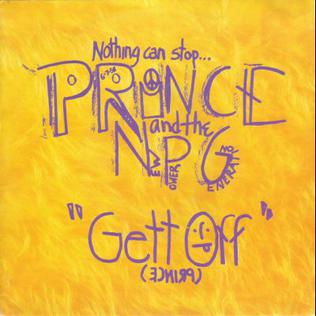
"Gett Off" is a song written and produced by American musician Prince, released in June 1991 as the lead single from his thirteenth album, Diamonds and Pearls (1991). The album was his first with his backing band the New Power Generation. "Gett Off" was a hit on both sides of the Atlantic, reaching number four in the United Kingdom; the maxi-single was too long and pricey to appear on the UK Singles Chart, so this release was classified as an album, peaking at number 33 on the UK Albums Chart in August 1991.

"Partyman" is a song by American musician Prince from his 1989 Batman album, and the follow-up to his number one hit, "Batdance". The song is one of the few on the album to be prominently featured in the film, accompanying the scene in which the Joker and his minions deface exhibits in the Gotham City Art Museum before meeting Vicki Vale.

"Thieves in the Temple" is a song by American musician Prince from the 1990 soundtrack album Graffiti Bridge. Added at the last minute, it was the final song recorded for the album. "Thieves in the Temple" topped the US R&B chart and became a number six hit in the US, and a number seven hit in the UK. The single also peaked at number nine on the dance chart.

"Scandalous" is the eighth track on Prince's soundtrack album Batman and was released as the album's fourth single, five months after the album was released. The music is attributed to Prince and his father, John L. Nelson. A maxi single was released after the single titled The Scandalous Sex Suite, which contained a three-part 19-minute suite of the song "Scandalous", with the three parts named The Crime, The Passion, and The Rapture. Kim Basinger, who was dating Prince at the time and who also played the character Vicki Vale in Batman, also appeared on the maxi single.

"New Power Generation", or "N.P.G.", is a song by American musician Prince from the 1990 album and film Graffiti Bridge. It is an anthem for his backing band, The New Power Generation, who were officially co-credited on his album covers for a time, and continued to back him up until 2013, albeit with a changing lineup. The song saw minimal chart attention, and was not as successful as its predecessor, "Thieves in the Temple".
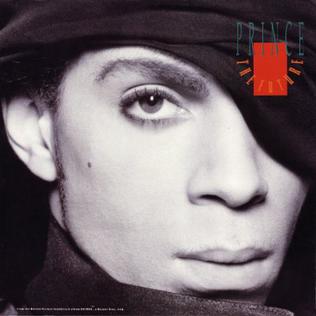
"The Future" is a song from American musician Prince's 1989 Batman soundtrack, and the final single released from the album. The single was not the album version, but a remixed version by S'Express' Mark Moore and William Orbit. "The Future" was released as a single only in Europe. The standard European 7-inch single was backed with the album version of "Electric Chair", but on the maxi-single, "Electric Chair" was also remixed by Moore and Orbit. Moore and Orbit's remix of "The Future" is house-inspired, whereas Prince's original is minimalistic. Moore and Orbit substituted a muted, pulsating beat in place of the original elements of Prince's song. Moore and Orbit also removed Prince's original bassline, synthline, and snippets of sampled dialogue. This would be the last time Orbit would work with Prince for several years. In most countries, neither "The Future" nor its B-side were a hit on the pop or dance floors. The single peaked at #9 in the Dutch charts.

The Beautiful Experience is an EP by American musician Prince, his second commercial release under the symbolic moniker. The EP contained seven mixes of the song "The Most Beautiful Girl in the World" in various formats, some with completely new vocals and/or instrumentation. Of particular note is the "Mustang Mix", in which Prince uses his normal singing voice and additional lyrics to give the song a sexual edge. The maxi-single also spawned two singles, "Staxowax" and "Mustang Mix", which were sold commercially in shops to support it.

"Purple Medley" is a medley of songs by American musician Prince from 1995. There is no album accompanying the single. The track is a mix of many hits and well-known songs from Prince's career. Some of the pieces of music are samples, while others are re-recorded for the mix. Some of the additional instrumentation is credited to The New Power Generation. The "Purple Medley" consists of snippets from the songs: "Batdance", "When Doves Cry", "Kiss", "Erotic City", "Darling Nikki", "1999", "Baby I'm a Star", "Diamonds and Pearls", "Purple Rain" and "Let's Go Crazy" and fades for the edit. The full version continues with "Sexy Dancer", "Let's Work", "Irresistible Bitch", "I Wanna Be Your Lover", "Alphabet St.", "Thieves in the Temple", the bassline to The Time's "777-9311", Sheila E.'s "A Love Bizarre", "If I Was Your Girlfriend", "Raspberry Beret", "Little Red Corvette", "Cream" and "Peach".

"Gold" is a song by American musician Prince, his stage name at that time being an unpronounceable symbol, and was released as the third single from his seventeenth studio album, The Gold Experience (1995). Obviously proud of the song, Prince touted it as the next "Purple Rain" to reporters before the album's release.

"Back to Life (However Do You Want Me)" is a song by British R&B band Soul II Soul featuring the Reggae Philharmonic Orchestra. It is an alternate version of a song that appears on their secondary debut album, Club Classics Vol. One (1989) (titled Keep On Movin' in the United States), and was released as its second single on 29 May 1989 by Virgin. "Back to Life" is one of two songs on the album featuring British singer Caron Wheeler and gained success in both North America and Europe, topping the charts in the Netherlands and the United Kingdom and peaking at number four in the United States. Its music video, directed by Monty Whitebloom & Andy Delaney, of Big TV!, sees the group performing in a forest. Soul II Soul won their first Grammy Award for Best R&B Performance by a Duo or Group with Vocal with the song in 1990. It was later included on a tenth-anniversary edition of the album.
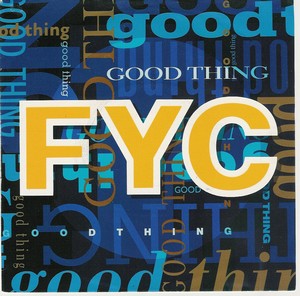
"Good Thing" is a song by British band Fine Young Cannibals, released as the second single from their second and last album, The Raw & the Cooked (1989). The song was their second and final US number-one, topping the Billboard Hot 100 on 8 July 1989. It also peaked at #7 on the UK Singles Chart. The song made its first appearance in Tin Men (1987). Fine Young Cannibals portrayed a nightclub band in the movie, performing this song and three others. The film is set in Baltimore in 1963, and the song's retro soul style is consistent with that setting. Jools Holland played piano on the track, noting that it was "one of the biggest selling records I've ever played on".
"Baby I'm a Star" is a song written and recorded by American musician Prince from his album Purple Rain. It is also the B-side on the "Take Me with U" single.

"Go" is a song by American electronica musician Moby, released in March 1991 by record label Instinct as the first single from his self-titled debut album (1992). It peaked within the top ten of the charts in the Netherlands and the United Kingdom. NME ranked the song number 41 in their list of "Singles of the Year" in December 1991.

"Something Good" is a song by English electronic music duo Utah Saints. It was first included as the opening song on a seven-track EP titled Something Good, then later included on their debut album, Utah Saints (1992). The song contains a vocal sample from Kate Bush's "Cloudbusting", which had been a top-20 UK hit in 1985. Issued as a single on 25 May 1992, it reached number four on the UK Singles Chart as well as number seven on the US Billboard Hot Dance Club Play chart. The BBC used the song during its coverage of the Opening Ceremony of the Barcelona Olympic Games of 1992 and was also used for Carlton Television's pre-launch trailer.

4Ever, also known as Prince 4Ever, is a greatest hits album by American recording artist Prince, released on November 22, 2016, by NPG Records and Warner Bros. Records. It is the first Prince release following the musician's death on April 21, 2016.
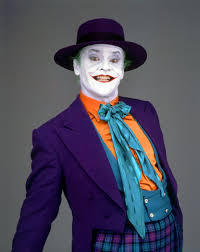
Jack Napier, also known as the Joker, is a fictional character introduced in the 1989 superhero film Batman, directed by Tim Burton. Primarily portrayed by Jack Nicholson, the character was based on the DC Comics supervillain the Joker. His name is a play on the word Jackanapes, as well as a reference to the names Jack Nicholson and Alan Napier, the latter having portrayed Alfred Pennyworth in the 1960s Batman TV series and having died the previous year. This depiction is notable for being one of the first adaptations of the character to have a distinct first and last name, as well as one of the few instances which show his origins. This iteration of the Joker is a psychopathic gangster who serves as the right-hand man of Gotham City crime boss Carl Grissom until he is disfigured following a confrontation with the vigilante Batman; his disfigurement drives him insane, and he becomes a costumed criminal obsessed with "out-doing" the Dark Knight, who he believes is getting too much press.
